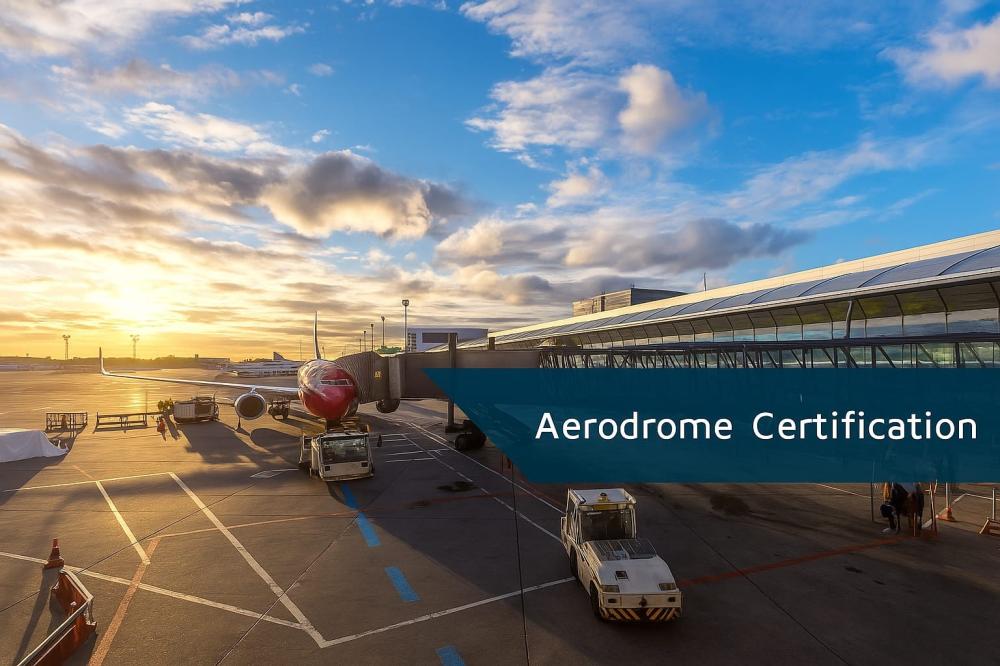 ماذا تعرف عن ترخيص المطار واجراءاته ؟
ماذا تعرف عن ترخيص المطار واجراءاته ؟
ترخيص المطارات: مفهومه وأهميته
ترخيص المطارات هو الإجراء القانوني والتنظيمي الذي يسمح بتشغيل المطارات وفقًا للمعايير الدولية والمحلية لضمان السلامة والكفاءة التشغيلية.
يتم إصدار هذا الترخيص من قبل الهيئات المختصة مثل الهيئة العامة للطيران المدني في المملكة العربية السعودية، والتي تشرف على تنظيم المطارات وضمان امتثالها للمعايير المطلوبة.
متطلبات الحصول على ترخيص المطارات
للحصول على ترخيص تشغيل مطار، يجب استيفاء عدة متطلبات تشمل:
- الامتثال لمعايير السلامة الجوية وفقًا للمنظمات الدولية مثل المنظمة الدولية للطيران المدني (ICAO).
- توفير البنية التحتية المناسبة مثل المدارج، بوابات الركاب، ومرافق الشحن.
- الالتزام باللوائح الاقتصادية التي تحدد رسوم الخدمات المقدمة في المطارات.
- إجراء عمليات تفتيش دورية لضمان الامتثال المستمر للمعايير التشغيلية.
أهمية ترخيص المطارات
يساهم ترخيص المطارات في:
- ضمان سلامة الركاب والطائرات من خلال تطبيق معايير صارمة.
- تحسين جودة الخدمات المقدمة للمسافرين وشركات الطيران.
- تعزيز الاقتصاد الوطني عبر تنظيم عمليات النقل الجوي وزيادة الاستثمارات في قطاع الطيران.
- الحد من المخاطر التشغيلية عبر فرض إجراءات رقابية صارمة.
ما هى انواع تراخيص المطارات التى تعتمد من الايكاو ؟ Airport Licensing Types
الإيكاو تعتمد عدة أنواع من تراخيص المطارات لضمان الامتثال للمعايير الدولية وتعزيز السلامة التشغيلية. من بين هذه الأنواع:
- ترخيص التشغيل: يُمنح للمطارات التي تستوفي متطلبات السلامة والبنية التحتية وفقًا لمعايير الإيكاو.
- ترخيص الامتثال التنظيمي: يضمن أن المطار يلتزم بالقوانين الوطنية والدولية المتعلقة بالطيران.
- ترخيص السلامة: يركز على الجوانب التشغيلية التي تؤثر على سلامة الطيران، مثل إدارة المخاطر ونظام إدارة السلامة (SMS).
- ترخيص البيئة: يتعلق بالامتثال للمعايير البيئية، بما في ذلك إدارة الضوضاء والانبعاثات.
- ترخيص الأمن: يضمن أن المطار يطبق إجراءات أمنية صارمة لحماية الركاب والطائرات.
ما أهمية كل نوع من التراخيص؟
كل نوع من تراخيص المطارات المعتمدة من الإيكاو يلعب دورًا مهمًا في ضمان السلامة والكفاءة التشغيلية للمطارات:
- ترخيص التشغيل: يضمن أن المطار يستوفي متطلبات السلامة والبنية التحتية وفقًا لمعايير الإيكاو، مما يسمح له بتقديم خدمات الطيران بأمان.
- ترخيص الامتثال التنظيمي: يؤكد التزام المطار بالقوانين الوطنية والدولية، مما يضمن توافق عملياته مع المعايير القانونية للطيران المدني.
- ترخيص السلامة: يركز على إدارة المخاطر ونظام إدارة السلامة (SMS)، مما يساعد في تقليل الحوادث وتعزيز بيئة تشغيلية آمنة.
- ترخيص البيئة: يضمن امتثال المطار للمعايير البيئية، مثل إدارة الضوضاء والانبعاثات، مما يساهم في تقليل التأثير البيئي للطيران.
- ترخيص الأمن: يضمن تطبيق إجراءات أمنية صارمة لحماية الركاب والطائرات، مما يعزز سلامة العمليات الجوية.
ما هي الكتيبات المعتمدة من الايكاو الخاصة بترخيص المطارات ؟
المنظمة الدولية للطيران المدني (الإيكاو) توفر مجموعة من الوثائق والمعايير المتعلقة بترخيص المطارات، ومن أهمها:
- الملحق الرابع عشر – المطارات ANNEX 14: يحتوي على القواعد والتوصيات الخاصة بالخصائص الفيزيائية للمطارات، والعوامل المساعدة البصرية، والخدمات الفنية المطلوبة.
- مجموعة أدوات تنفيذ ترخيص المطارات (iPack): تم تطويرها بالتعاون بين الإيكاو والمجلس الدولي للمطارات (ACI) لمساعدة الجهات التنظيمية ومشغلي المطارات في تنفيذ برامج ترخيص المطارات وفقًا للمعايير الدولية.
- دليل تشغيل المطار ACM: يتضمن اللوائح التنظيمية التي يجب أن تتوافق مع متطلبات الإيكاو لضمان السلامة التشغيلية للمطار.
- تشريعات من الهيئة العامة للطيران المدنى GACAR 139 : وهذا الجزء يحتوى على اجراءات التفصيلية والتشغيلية لترخيص المطارات التابعة لتشريعات هيئة الطيران المدنى السعودى
ما هى إجراءات ترخيص المطارات وفقًا لقواعد الإيكاو؟
ترخيص المطارات هو عملية تنظيمية تهدف إلى ضمان امتثال المطارات للمعايير الدولية الخاصة بالسلامة التشغيلية، والأمن، وإدارة الحركة الجوية. المنظمة الدولية للطيران المدني (الإيكاو) وضعت مجموعة من القواعد والإرشادات التي يجب اتباعها للحصول على الترخيص اللازم لتشغيل المطارات. فيما يلي نظرة تفصيلية على إجراءات ترخيص المطارات وفقًا لقواعد الإيكاو حيث ايضا يتكون اجراءات ترخيص المطار الى 5 اجزاء وهم كالاتى :
1. المتطلبات الأساسية لترخيص المطارات
قبل البدء في إجراءات الترخيص، يجب أن يستوفي المطار مجموعة من المتطلبات الأساسية، والتي تشمل:
- الموقع الجغرافي: يجب أن يكون موقع المطار مناسبًا من حيث التضاريس، والظروف الجوية، وقربه من المناطق السكنية.
- التصميم والبنية التحتية: يجب أن يتوافق تصميم المطار مع المعايير الهندسية للإيكاو، بما في ذلك طول وعرض المدرج، وأنظمة الإضاءة، والمرافق التشغيلية.
- إجراءات السلامة: يجب أن تتوفر أنظمة السلامة مثل مكافحة الحرائق، وإجراءات الطوارئ، وخطط إدارة الأزمات.
2. تقديم طلب الترخيص
يتم تقديم طلب رسمي إلى الهيئة التنظيمية للطيران المدني في الدولة المعنية، ويتضمن الطلب:
- وثائق تثبت ملكية الأرض أو حقوق استخدامها.
- دراسة الجدوى الاقتصادية والتشغيلية للمطار.
- تقرير تقييم الأثر البيئي.
- خطط السلامة وإدارة المخاطر.
3. التقييم الفني والتفتيش
بعد تقديم الطلب، تقوم الجهات المختصة بإجراء تقييم شامل يشمل:
- التفتيش الميداني: يتم فحص البنية التحتية للمطار، ومدى توافقها مع معايير الإيكاو.
- اختبار أنظمة الملاحة الجوية: التأكد من كفاءة أنظمة الاتصالات والملاحة الجوية.
- مراجعة إجراءات التشغيل: التأكد من وجود دليل تشغيل المطار الذي يتوافق مع اللوائح التنظيمية.
4. الموافقة وإصدار الترخيص
بناءً على نتائج التقييم، يتم اتخاذ القرار بشأن منح الترخيص. إذا استوفى المطار جميع المتطلبات، يتم إصدار شهادة الترخيص التي تسمح له بالعمل وفقًا للمعايير الدولية. في حال وجود أي نقص، يتم منح المشغل فترة زمنية محددة لتصحيح الأوضاع قبل إعادة التقييم.
5. المتابعة والتدقيق الدوري
حتى بعد الحصول على الترخيص، يجب أن يخضع المطار لعمليات تدقيق دورية لضمان استمرار الامتثال للمعايير الدولية. تشمل هذه العمليات:
- مراجعة دورية للبنية التحتية.
- تقييم إجراءات السلامة والتعامل مع الطوارئ.
- تحديث أنظمة الملاحة الجوية وفقًا لأحدث التطورات التقنية.
الخاتمة
ترخيص المطارات وفقًا لقواعد الإيكاو هو عملية دقيقة تهدف إلى ضمان أعلى مستويات السلامة والكفاءة التشغيلية. من خلال الالتزام بهذه الإجراءات، يمكن للمطارات أن تعمل وفقًا للمعايير الدولية، مما يعزز سلامة الطيران المدني ويضمن تجربة سفر آمنة للمسافرين.
Airport Licensing: Its Concept and Importance
Airport licensing is the legal and regulatory process that permits the operation of airports in accordance with international and local standards to ensure safety and operational efficiency.
This license is issued by relevant authorities, such as the General Authority of Civil Aviation (GACA) in Saudi Arabia, which oversees the regulation of airports and ensures their compliance with required standards.
Requirements for Obtaining an Airport License
To obtain an airport operation license, several requirements must be met, including:
- Compliance with aviation safety standards set by international organizations like the International Civil Aviation Organization (ICAO).
- Provision of appropriate infrastructure, such as runways, passenger gates, and cargo facilities.
- Adherence to economic regulations that define service fees for airport facilities.
- Conducting regular inspections to ensure ongoing compliance with operational standards.
Importance of Airport Licensing
Airport licensing contributes to:
- Ensuring the safety of passengers and aircraft through stringent standards.
- Improving the quality of services provided to travelers and airlines.
- Boosting the national economy by organizing air transport operations and increasing investments in the aviation sector.
- Reducing operational risks by enforcing strict regulatory measures.
Types of Airport Licenses Approved by ICAO
ICAO approves several types of airport licenses to ensure compliance with international standards and enhance operational safety, including:
- Operational License: Granted to airports that meet ICAO safety and infrastructure requirements.
- Regulatory Compliance License: Ensures the airport adheres to national and international aviation laws.
- Safety License: Focuses on operational aspects affecting flight safety, such as risk management and Safety Management System (SMS).
- Environmental License: Relates to compliance with environmental standards, including noise and emissions management.
- Security License: Ensures the airport implements strict security measures to protect passengers and aircraft.
Importance of Each License Type
Each type of ICAO-approved airport license plays a crucial role in ensuring airport safety and operational efficiency:
- Operational License: Confirms the airport meets ICAO safety and infrastructure requirements, allowing it to provide aviation services safely.
- Regulatory Compliance License: Guarantees the airport's operations align with legal aviation standards at both national and international levels.
- Safety License: Focuses on risk management and the Safety Management System (SMS), helping to reduce accidents and enhance a secure operational environment.
- Environmental License: Ensures the airport complies with environmental regulations, including managing noise and emissions, which contributes to minimizing aviation’s environmental impact.
- Security License: Enforces strict security measures to protect passengers and aircraft, reinforcing air transport safety.
ICAO-Approved Manuals for Airport Licensing
The International Civil Aviation Organization (ICAO) provides various documents and standards related to airport licensing, including:
- Annex 14 – Airports: Contains regulations and recommendations on the physical characteristics of airports, visual aids, and required technical services.
- Airport Licensing Implementation Toolkit (iPack): Developed in collaboration with ICAO and the Airports Council International (ACI) to assist regulatory bodies and airport operators in implementing airport licensing programs according to international standards.
- Airport Certification Manual (ACM): Includes regulatory guidelines that must comply with ICAO requirements to ensure airport operational safety.
- GACAR 139 Regulations from the General Authority of Civil Aviation: This section outlines the detailed operational procedures for licensing airports according to Saudi aviation regulations.
Airport Licensing Procedures According to ICAO Rules
Airport licensing is a regulatory process aimed at ensuring airports comply with international standards related to operational safety, security, and air traffic management. ICAO has established a set of rules and guidelines that must be followed to obtain the necessary license for airport operations.
The airport licensing process consists of five main stages:
- Basic Requirements for Airport Licensing Before initiating the licensing process, the airport must meet several basic requirements, including:
- Geographical Location: The airport should be situated in a suitable area considering terrain, weather conditions, and proximity to residential zones.
- Design and Infrastructure: The airport design must adhere to ICAO engineering standards, including runway length and width, lighting systems, and operational facilities.
- Safety Measures: Essential safety systems should be in place, such as firefighting protocols, emergency procedures, and crisis management plans.
- Submitting the License Application A formal application is submitted to the civil aviation regulatory authority of the respective country, including:
- Documents proving land ownership or usage rights.
- Economic and operational feasibility study of the airport.
- Environmental impact assessment report.
- Safety and risk management plans.
- Technical Evaluation and Inspection After submission, the authorities conduct a comprehensive assessment involving:
- Field Inspection: Examining airport infrastructure and its compliance with ICAO standards.
- Testing Air Navigation Systems: Ensuring the efficiency of communication and navigation systems.
- Reviewing Operational Procedures: Confirming the presence of an Airport Operations Manual that complies with regulatory guidelines.
- Approval and License Issuance Based on evaluation results, a decision is made regarding license approval. If all requirements are met, a certification is issued, allowing the airport to operate according to international standards. If deficiencies are found, the operator is given a specific period to correct them before reassessment.
- Monitoring and Periodic Audits Even after obtaining the license, airports must undergo regular audits to maintain compliance with international standards, including:
- Periodic infrastructure reviews.
- Safety and emergency response assessments.
- Updating air navigation systems according to the latest technological advancements.
Conclusion
Airport licensing according to ICAO standards is a meticulous process aimed at ensuring the highest levels of safety and operational efficiency. By following these procedures, airports can operate in compliance with international regulations, enhancing civil aviation safety and ensuring a secure travel experience for passengers.
تواصل معنا من خلال :
http://www.linkedin.com/in/engineer-hisham-gamal-2b745110b

